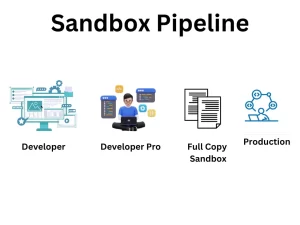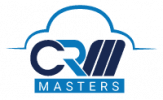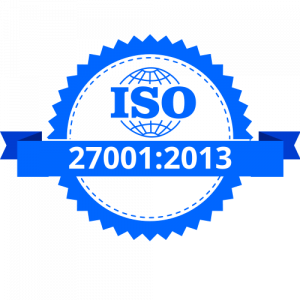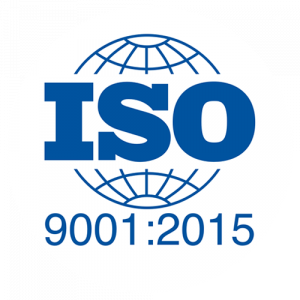
Salesforce Configuration and Customization
Salesforce is a tool that manages your business customer relationship management, sales, and marketing. The Salesforce configuration and customization are two different terms which we are explained below.
Salesforce customization is the process of altering the functionality and appearance of the platform, While configuration is the process of organizing and configuring the platform. To optimize the use of Salesforce, you must understand the fundamental distinction between Salesforce configuration and Salesforce customization.
In today’s blog post, we’ll learn about Salesforce Configuration and Customization.
What is Configuration in Salesforce?
Salesforce Configuration means you can do all the things inside your CRM System. It indicates you may create a new field that employs a formula or a set of rules to accomplish a certain result. In short, user-defined values enable a certain module or feature to function based on the Salesforce setup. You can do most of this on your own, but hiring a Salesforce Partner increases ROI for your business.
Examples of Salesforce Configuration
Here are Some Examples of Salesforce Configuration:
- Adding or modifying fields
- Adding apps from AppExchange
- Creating record types
- Adding objects or tabs
- Creating new permissions
- Building new page layouts
- Creating email templates
- Creating or changing workflows
- Building reports and Dashboards
- Creating new user profiles
- Changing the user interface
Best Practices of Salesforce Configuration
Configuring Salesforce is one of the most important things you can do to get the most out of your CRM. Just Check out the below best practices for SFDC configuration.
1. Run Field Utilization Reports
This Salesforce configuration allows you to see if any news sources are contaminating your data. The most effective way to address this is to reduce the number of fields that are always blank by 30%. In addition, we recommend deprecating the field that is always blank by 95% regularly. However, make sure you do not remove this field from your CRM.
2. Deactivate Non-Active Users
Deactivate users who don’t need Salesforce access for any reason or have quit the company. Deactivating these users will help streamline your Salesforce.
3. Keep a Check on Errors
Do not forget to review Salesforce configuration issues that pop up now and then. You’ll also want to check your logs to prevent last-minute crashes. Every time an external application syncs your Salesforce data with theirs, take a look at their error logs to see if any new patterns are popping up.
4. Examine the Login History Table
With this Salesforce configuration, you will be able to detect any lockouts. Additionally, you will also be able to prevent excessive login errors.
5. Run the APEX Test
All APEX tests should be run in your Salesforce for SFDC configuration. It allows you to detect new errors that may have occurred as a result of data cleanup or changes to validation rules or triggers.
Pros and Cons of Salesforce Configuration
| Sr. No | Pros | Cons |
|---|---|---|
| 1 | High-end Flexibility | Required inter-option dependency |
| 2 | It can support different kinds of customers and users | Complex to build |
| 3 | Enables different kinds of businesses to grant access to employees the way they choose | It’s hard to figure out how stable something is when there are so many different ways to go about it. |
| 4 | Prevents duplication of codes | It considers all the different options and builds all of them |
| 5 | It is capable of consolidating all the necessary logic into a single point in the code. | The complexity of testing increases as each unrelated element has to be taken into account. |
What is Customization in Salesforce
Salesforce customization is the process of creating custom software and coding to give your CRM more powerful features. These are usually the things that you can’t do with just Salesforce and expand the capabilities of your CRM to cover more of your business’s needs.
Examples of Salesforce Customization
Here are some examples of Salesforce Customization.
- Apex Classes,
- Apex Triggers,
- Third-Party Integrations
- Visual Force Emails
- Building Visual Force Pages
- Creating Lighting Components
- Developing Low-Code Applications
- Build New Websites
Pros and Cons of Salesforce Customization
| Sr. No | Pros | Cons |
|---|---|---|
| 1 | It is simple to construct because it meets the exact requirements of the customer. | Tough to maintain |
| 2 | You don’t have to create your solution and provide multiple options. | Getting along with the customer is challenging because they feel they have the right to dictate what is required. |
| 3 | It has no impact on the rest of the application. | You could fall into the trap of over-customizing, even if you don’t need to. |
| 4 | Focusing on a single group of customers | Applicability risk and teams losing focus and vision risk. |
| 5 | It is typically used for custom website design and system integration. | Risks to the application’s scalability in the future |
Best Practices for Salesforce Customization
1. Plan and Prepare
Before you spend time and money making changes to anything in your system, you need to know precisely what you need. It’s essential to plan and know which features you need to customize. At this stage, you need to understand what resources you’ll need for a successful implementation. Salesforce customization will make your project unique.
2. Pay attention to users
One of the primary goals of Salesforce customization is to make Salesforce more functional and efficient for end users. End users are the employees who use Salesforce regularly. Therefore, it is essential to ask them questions about the issues, additional features, or anything else that might help with the implementation. To customize Salesforce effectively, you need to ensure that all the requirements are met. With continuous feedback and consulting, you can easily customize your sales force.
3. Connect with Salesforce Implementation Partner
Salesforce is a collection of different features. By using it, organizations can solve specific problems. In such situations, it is always a good idea to enlist the help of a Salesforce consultant. These experts in Salesforce customization are well-versed in the customization process. Not only that, but they also provide overall support and meet all the business requirements. Therefore, it is recommended to work with a professional Salesforce customization company to get the most out of it.
4. Use a sandbox
A sandbox is a place where you can run programs and open files without affecting your actual files. It’s a great way to test and train your project without messing with the actual files. So, it’s a good idea to test your stuff in a sandbox before rolling it out to production.
5. Use naming conventions
Naming conventions are a set of rules for the naming of files. They explain what a file is, what it contains, and how it interlinks with other files. Simple, accurate, and well-structured naming conventions can help improve communication between developers and administrators. Additionally, appropriate training may be necessary to ensure that all stakeholders in the organization adhere to the naming conventions adopted.
6. Consistent testing
Test it thoroughly and often before releasing your customization from the sandbox. The primary goal of testing is to ensure that the new features work effectively in all environments. It will save you time and improve the overall performance of Salesforce.
Salesforce Configuration V/s Salesforce Customization
| Sr. No | Salesforce Configuration |
Salesforce Customization |
|---|---|---|
| 1 | It is more cost-effective than customization. | It is necessary when you need to connect multiple third-party systems that cannot be installed through third-party integrations. |
| 2 | It’s much easier because you can take advantage of built-in tools, modules, and features to automate processes within your CRM. | It’s a much easier way to create your interactive dashboards and reports to gather all the data. |
| 3 | It’s less risky because Salesforce’s built-in capabilities can minimize system downtime in the long term compared to custom code. | It Customizes the system according to the requirements of the end user, taking into account every small request and making sure that the end user adopts the system. |
Conclusion
Whether you prefer Salesforce configuration or Salesforce customization, each has its own set of requirements. Both are essential for organizations to reach their business objectives. Depending on the parameters, circumstances, and basic requirements mentioned above, companies have the option to choose one or the other for their business growth.
Learning how to set up a CRM is not a simple task. It requires the help of an experienced Salesforce Consulting Partner, the best in the business. Having a dedicated Salesforce customization and development partner will help you take your business to the next level.
Sweet Bonanza 1000 shining crown Shining Crown matbet Sweet Bonanza 1000 Fortune Rabbit pusulabet İmajbet













